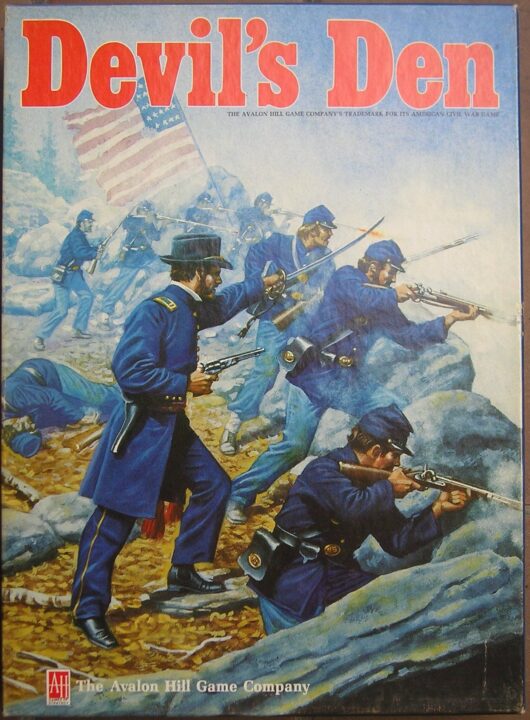If you’ve ever wanted to outwit your friends while wondering if your fate hangs on a dice roll or your actual brainpower, then you’re in the right place. Welcome to my review of Devil’s Den, a board game that promises wild swings, sneaky strategies, and a few moments where you’ll laugh so hard you’ll nearly forget that someone just sabotaged your last move. After several late-night showdowns with my trusty gaming crew, I’ve got stories (and opinions) to share—let’s see if Devil’s Den belongs on your game shelf or in the actual devil’s lost-and-found.
How It Plays
Setting up
Unfold the Devil’s Den board and hand out player tokens, cards, and the suspiciously red dice. Place the evil lord marker smack in the center. Shuffle the event and resource decks. Deal each player their starting stash (and a crumb of hope—trust me, you’ll need it).
Gameplay
On your turn, roll the dice and move your token. Land on spaces to find resources or trigger tricky events. Decide if you want to bribe the evil lord or try your luck with battle cards. Collect sets, backstab your friends (figuratively! mostly), and try not to lose all your hard-earned loot to sneaky events.
Winning the Game
Snag enough victory points by gathering rare items, finishing secret goals, or just causing enough chaos. The game ends after a set number of rounds or when someone completes their secret mission. Whoever’s ahead in points at the end claims the Devil’s Den crown—and earns the right to gloat. Or buy the next round of snacks.
Want to know more? Read our extensive strategy guide for Devil’s Den.
Do the Mechanics in Devil’s Den Actually Play Fair?
Balance in a board game can mean the difference between a nail-biting photo finish and your mate sulking on the couch because they got smashed in the first round. When my friends and I first set up Devil’s Den, I had high hopes. The game looks intense, but does it walk the tightrope of balance? Well, let me spill the beans without spoiling the soup.
First, each player starts with the same resources, which is always a good sign. No one gets to sneak an early lead just because they drew the right card or rolled a six. But while that sounds great, things change fast in Devil’s Den. The game throws in event cards that can swing the tide for (or against) you in two shakes of a lamb’s tail. I saw my friend Pete go from ruling the board to bottom of the barrel after pulling one nasty event. He still talks about it like a war story.
The action selection also means you get meaningful choices, but here’s a kicker: some actions always seem stronger. The “Reinforce the Den” move is the golden child, and our group always fought for it like pigeons after chips. It makes you wonder if the designers had a favourite action too. That said, smart play usually wins out, as long as you’re not the poor soul ambushed by three event cards in a row. Unlucky streaks hurt, but skill still matters most.
So, Devil’s Den tries to juggle luck and skill. It mostly works, but a touch more tweaking would help. Next up, I’ll open the box (not literally) and talk about the quality and design of the game pieces. Spoiler: no actual devils inside.
Quality and Design of Game Pieces in Devil’s Den
Let’s talk about the star of the table—how Devil’s Den actually looks and feels. You know how some games feel like a garage project from a rainy Saturday? Not this one. The moment I cracked open the box for Devil’s Den, I almost cried. The pieces felt solid, like someone out there actually cared about my greasy hands handling them after a pizza binge.
The board itself? Vibrant colors and a design that actually makes sense. No random blobs or squinting to see what space Purple Steve just landed on. The cardboard tokens have that satisfying clunk when you toss them in a pile. If you’ve suffered the dreaded “bendy tokens” from cheap games, you’ll be happy to know Devil’s Den does not bend to such low standards. The miniatures are cute but also kind of menacing—perfect for a game called Devil’s Den. My friend Lisa said, “These devils are so snazzy, I kind of want to put one on my shelf.” I had to agree, right before my cat knocked one across the kitchen.
The cards are thick enough to survive a wild shuffling session, which—trust me—happens a lot in our group. The font is readable, so Grandma Betty won’t have trouble keeping up (unless she’s halfway through her second glass of wine, then all bets are off).
Sure, they could’ve splurged for even fancier components, but for the price, it’s pretty darn spiffy. Next up, let’s talk about the real reason you’re here—how much fun Devil’s Den is with two, three, or an all-out six-player chaos-fest!
Fun Factor: Does Devil’s Den Shine with Different Groups?
I’ve played Devil’s Den with all sorts of groups—rowdy friends, my grumpy uncle (who never lets me win), and once, a couple of game-hating cats. Okay, the cats weren’t much help, but the rest? It got interesting fast.
With two players, Devil’s Den becomes a tense showdown. Every move feels important, and you can almost hear the gears turning inside your opponent’s skull. It’s chess-like, but with a hint of mischief. You can really get in your friend’s head—or just annoy them until they give up and go for snacks instead.
Three and four players open things up. Suddenly, alliances and betrayals are on the table. My friend Steve made a temporary truce with me, which lasted all of twelve minutes before he betrayed me for some extra points. I won’t hold it against him (I totally will). The game gets louder and goofier, but it also slows down a bit as people scheme and gossip. If you like a bit of chaos and don’t mind waiting your turn, it’s a blast.
At five or six players, Devil’s Den gets downright bonkers. There’s always something happening, and sometimes you’ll feel a bit left out as everyone conspires against you. Turns can drag on, and I noticed a few players checking their phones (or napping). Still, it makes for a wild ride and tons of laughs—just don’t expect lightning speed.
If you want to know whether luck or strategy wins the day in Devil’s Den, you’re going to want a comfy chair for the next bit…
Luck or Genius? Testing Your Skills in Devil’s Den
Let’s talk about the real battle in Devil’s Den: luck versus strategy. If you have ever lost a game and blamed it on a lousy roll, you know how spicy things can get. With Devil’s Den, my friends and I had a wild ride. I tried playing like a chess master, but sometimes a random event card would come along and turn my plan into dust faster than I could shout, “Noooo!”
The core moves in Devil’s Den reward smart thinking. The choices you make—where to move, when to attack, and how to use your resources—can tip the game in your favor. Most games had me plotting, second-guessing, and risking a friendship or two, which is peak board game for me. But the game stays unpredictable. Those event cards show up when you least expect it, and bam, everything changes. It keeps players on their toes, but if you hate random twists, it can sting.
One time, I was inches from victory when my buddy drew the “Devil’s Favor” card. He barely did anything smart—pure luck. He laughed; I wept. That said, skill does matter here, but wild swings in fortune pop up more than I’d like. It’s not a deal breaker, but it sometimes feels like Lady Luck’s in the driver’s seat.
Final verdict: I recommend Devil’s Den to folks who want both strategy and the thrill of not knowing what comes next. If you hate luck messing with your hard work, maybe keep this one on the shelf—unless you love yelling at cardboard.
Conclusion
So, that wraps up my wild ride with Devil’s Den. The game packs a punch with tough choices and some sneaky twists. The pieces are solid, and the board looks nice enough that even my dog gave it a sniff of approval. It works great with any amount of players, but if you hate sudden swings of luck, you might end up yelling at the game (like Pete did last Friday). Still, if you enjoy a mix of laughter and competition, Devil’s Den is a good time. Thanks for reading my review—now go see if you can survive the Den!


